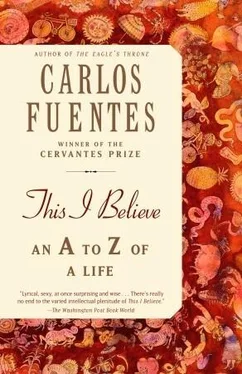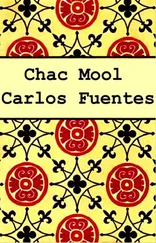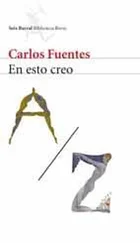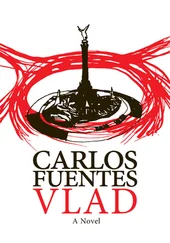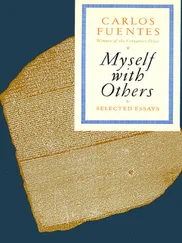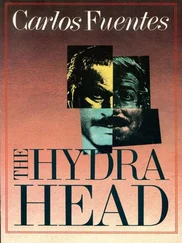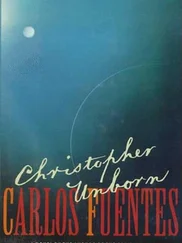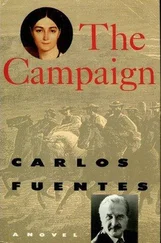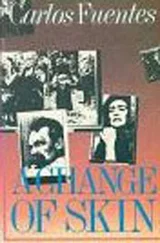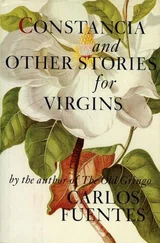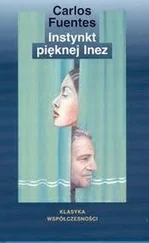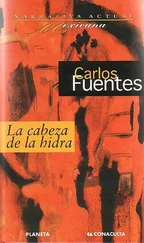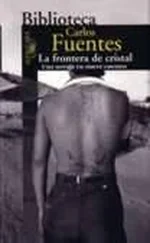America thus becomes the contradiction of Europe, its utopia. But u-topos is the place that does not exist. How can America — a place that indeed exists — be the place that exists only in the imagination? From Vespucci, Columbus, and the chroniclers of the Indies to Neruda, Carpentier, and García Márquez, we appear to be Europe’s utopia, the felicitous return to the land of origins. Neruda most often sings to an idyllic, pre-Hispanic America, where the boorish conquistadors robbed the gold in the mines but left behind the gold of their language. Carpentier goes back in time, traveling to the seed of all civilization at the source of the Orinoco. But it is García Márquez who closes the doors to regression with lock and key after discovering the reclaimed paradise. The communities that have experienced those symbolic “hundred years of solitude” will have no other opportunity on this earth. The opportunity, García Márquez implies, of regressing to the u-topos, though yes, the opportunity of building a better city, a Latin American civitas, for the future. In this sense, utopia reassumes its true face. It is a project for the future.
The dream of a Golden Age, nevertheless, is a persistent one. At some time in the past, there must have existed an elemental age of natural joy and harmony. We may live in misfortune, but we must have been born into happiness. An abundantly loving mother, embracing all her children, making no distinctions among them, must have preceded the wretched patriarchy that imposes the survival of the fittest, appoints his firstborn heir, descendants, property, boundaries, and declares war to defend all those things. . Even if this theory were true, I can’t help but think that, as with all human endeavors, nature is perfectly indifferent to the question of matriarchy and patriarchy. Perhaps we all suffer the offenses we have perpetrated against nature. For one thing, we can be certain that nature is utterly indifferent to our fragility, our vulnerability, our fatal disappearance from earth. . The setting sun does not know its own beauty. The canyons of Colorado do not know their own magnificence.
I am a creature of the pavements. I prefer cities because neither they nor I are under any illusion about our respective permanence. A city is an accidental tribe, Dostoevsky said. But I am far better able to identify my mortal condition, my precarious destiny with that accidental tribe, precisely because of its accidental condition, its unpredictable and reckless movement, than with a natural environment idealized to the very apex of happiness and immortality, only to fall over and over again into the depths of the most destructive depravity. Nature’s beauty is so deceitful. The metropolis is hostile but does not hide this fact. Natural beauty can be unfaithful: the lovely mask of an original or imminent chaos. For that reason I admire — though also fear — the city as a response to nature, so tumultuous and savage. Can’t cities just as easily fall into the very same condition that makes us fear the harshness of the natural world: the selva selvaggia ? The only difference is that the urban jungle is a jungle of our own making.
Cities risk danger, cities fall to their knees, they grow sick and they die. Our century, like no other, has shown itself capable of eliminating entire cities. Not even Scipio in his confrontation with Numantia or Carthage destroyed cities with the barbarity and technical skill of which we have been capable in our time, from Sarajevo to Sarajevo, with Verdun and Guernica in between, Chungking and Dresden, Hiroshima and Baghdad. . History is urbanicide. Some cities survive. Others disappear forever. Babylon no longer exists. The Cuzco of the Incan civilization is a ghost. The Tenochtitlán of the Aztecs is a petrified, tremulous underground above which we find the successive cities of Mexico— the indigenous, the Baroque, the neoclassical, the nineteenth-century, the modern. Rome continues to add almost geological layers to its age of antiquity. There are the partially subterranean cities. They invite us to penetrate their labyrinths. How easy it is to lose ourselves in them and never again see the light of day.
I adore the cities that instead of burying or hiding themselves away, stretch out, show themselves off, expose their spaces like jewels spread out on velvet. Paris is the perfect city in this sense. It changes, but it does not hide. It expands, but it does not disappear. Those of us who are inveterate lovers of this city can bemoan the disappearance, here and there, of a bookshop, a café, a market. . But in its essence, Paris does not change. The literary and musical references are always there. A novel by Balzac is a novel by Proust is a novel by Le Clézio. A poem by Villon is a poem by Apollinaire is a poem by Prévert. A song by Piaf, by Patachou, by Jean Sablon or Georges Brassens, or the marvelous Barbara, never grows old. The places cited are encircled forever by names like Pigalle, Montparnasse, the Rue LePic, the Pont Mirabeau, the Place Dauphine where dead leaves will fall forevermore.
What is this? Why is this? History, prestige, esprit, continuity, powerful evocations? No. It is light. To say “the city of light” is a platitude that some innocents believe to be a reference to the public lighting scheme. They don’t realize that it refers to nothing less than a miracle: “Every afternoon, in Paris, one miraculous moment dispels the accidents of the day — rain or fog, sweltering heat or snow — to reveal, as in a Corot landscape, the luminous essence of the Île-de-France” ( Una familia lejana [ Distant Relations ]).
Paul Morand, with whom I coincided on various occasions at the pool of the Automobile Club of France on the Place de la Concorde, told me that in his last will and testament he had included a provision stating that his skin should be used as a suitcase so that he might be able to travel for all eternity. Venice — or rather the Venices, in plural — was one of the favorite cities of that self-proclaimed “widower of Europe.” For Morand, Venice was more than just a city; it was the confidante of his silent soul, the portrait of a man in a thousand different Venices. I, who spent six months living opposite the Chiesa de San Bastian, decorated by Veronese in that half of Venice that is the Dorsoduro, experience Venice as a city that requires absence in order to preserve its glory, which is the glory of wonder. As humans we possess the remarkably consistent capacity for turning the marvelous into the routine. When I realized that I was walking through San Marco looking at nothing more than the tips of my shoes, I finally broke free from my routine so that I might recover that feeling of wonderment, so that I might remember and write of Venice as the city where no footprints are left behind upon the stone or the water. In that place of mirages there is no space for any ghost other than that of time, and the marks it leaves behind are imperceptible. The lagoon would disappear without the stone it reflects, and the stone would disappear without the waters that reflect its image. What weak competition, I think to myself, are the transient bodies of men in the face of this enchantment. Whether we are solid or spectral is of little importance. It is all the same. All of Venice is a ghost. And it does not issue entrance visas to any other ghost. Here, nobody would recognize them as such. And so, they would cease to exist. No other ghost exposes itself to quite so much.
For me, the loveliest cities in Europe, in addition to Venice, are Prague and Cambridge. Prague, the dead lover of the Vltava. Prague, the city abandoned by its writers: Rilke, Werfel, Kundera, the exiles that left so that they could break “the curse of Prague.” The city of ghettos, isolation, emotional walls, prohibited territories, the city of impersonal documents, where the true language is that of the passport, the identity card, the bureaucratic slip of paper that decides who is and who is not a person.
Читать дальше
